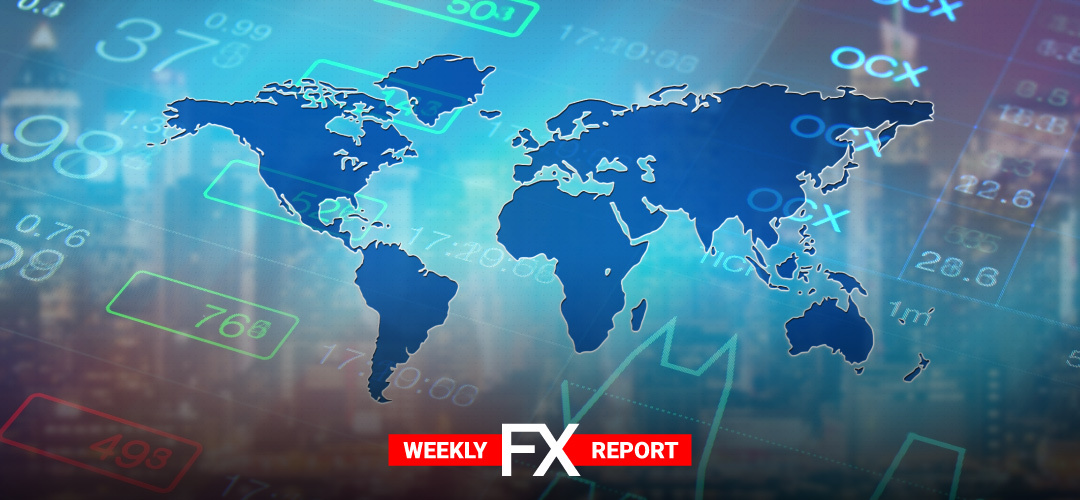First-quarter economic numbers point to contraction at a fast pace as national economies still struggle due to the business inactivity caused by the coronavirus pandemic.
Experts expect a worse second quarter and a growth and sharp rebound in the third quarter. Still, this rebound would not be enough to make up for the economic output for the year.
The International Monetary Fund warned last month the global economy will take much longer than expected to fully recover. The IMF suggested a 3% contraction this year.
The US economy shrank at an even faster pace than originally estimated in the first quarter. US GDP fell by an annualized rate of 5% instead of 4.8%. Moreover, the U.S. consumer spending dropped by a record 13.6% in April. Such data add to expectations that the US economy could contract in the Q2 at its steepest pace since the Great Depression.
The European Central Bank meets on Thursday. Investors hope that policymakers will deliver yet more stimulus for an economy ravaged by the coronavirus pandemic. The European Commission proposed a 1.85 trillion-euro fiscal package to lift the region’s economy.
Asia’s factory pain deepened in May as the slump in global trade caused by the coronavirus pandemic worsened. Investors focus on positive signs from China’s post-coronavirus economic recovery. China’s May factory activity returns to growth. On the contrary, Japan’s factory activity shrank at the fastest pace since 2009. Asia’s economic woes are likely to be echoed in other parts of the world.
On the trade war front, there was relief that U.S. President Trump made no move to impose new tariffs on China. The U.S.-China dispute over Hong Kong’s status and Beijing’s handling of the pandemic could sour business sentiment.
START TRADINGLQDFXperts – National economies continue to shrink
The currency market mood is notable. The progress on re-opening economies helped offset jitters over riots in U.S. cities. Demonstrations against police brutality turned into a wave of outrage all over USA.
EUR/USD continues to rally, as the pair broke above the 1.10 level and the common currency jumped close to 2%. May was the best month for euro since December. The EU’s 750 billion-euro coronavirus recovery fund fueled optimism about its political future.
GBP/USD enjoyed its strongest week since late March, with gains of 1.5% as US GDP weighed on the greenback. Several factors weigh on pound: Britain’s high COVID-19 death rate· a lack of progress in Brexit negotiations· a bleak economic outlook· the BoE considering negative interest rates.
Dollar/yen drifted last week, as the pair remains close to the 108 level. The Japanese currency failed to take advantage as US economy shrinks but still remains in better shape than the Japanese.
The Australian dollar climbed to a 10-week peak, posting strong gains for a second successive week. The AUD/USD jumped 2% for the month. As Australia brought the coronavirus under control Αussie’s rise may serve as a guide for currency traders as national economies emerging from lockdown.
The Canadian dollar rallied, posting sharp gains. USD/CAD fell to its lowest level since mid-March. However, the outlook for the Canadian economy remains weak. Canada’s GDP fell a record 11% in April from the previous month as the biggest part of the economy was shut down.
The week ahead – Soft data reflects the struggle of economies worldwide
National economies remain in poor economic shape and continue to grapple with economic uncertainty. Soft data reflects the struggle of economies worldwide following a months-long lockdown.
- On Monday (01.06) the Institute for Supply Management Manufacturing PMI will provide details the U.S. manufacturing activity. Even parts of the country resumed business, economists expect contraction, with an estimate of 43.5 points.
- On Tuesday (02.06) focus turns to the RBA Rate Decision. After slashing the cash rate to 0.25%, the RBA has not touched rates since March and most probably will not.
- Another round of Brexit talks get underway on Tuesday (02.06) ahead of the June 18-19 EU summit. By then London needs to make up its mind about asking for an extension to the transition agreement. Also, investors are looking forward to the BoC Rate Decision and the ISM Non-Manufacturing PMI.
- Markets wait an ECB meeting on Thursday (04.06) which probably raise its asset buying by around 500 billion euros to 1.25 trillion. Moreover, policymakers will probably maintain interest rates at a flat 0.00%.
- The US jobs report is set to drop Friday (05.06). Estimates are not rosy as they show that the unemployment rate rose to 19.8% in May. Unemployment nationwide has risen to 14.7%, with 36.5 million Americans filing for jobless benefits since mid-March. Non-farm payrolls are expected to drop by 7.4 million, adding to the 20.5 million jobs lost the previous month. Experts reportedly say states reopening and government loans to small businesses have not helped much.
Follow this week’s economic calendar.
PLEASE NOTE The information above is not investment advice.
Sources: Reuters, CNBC, FX street
